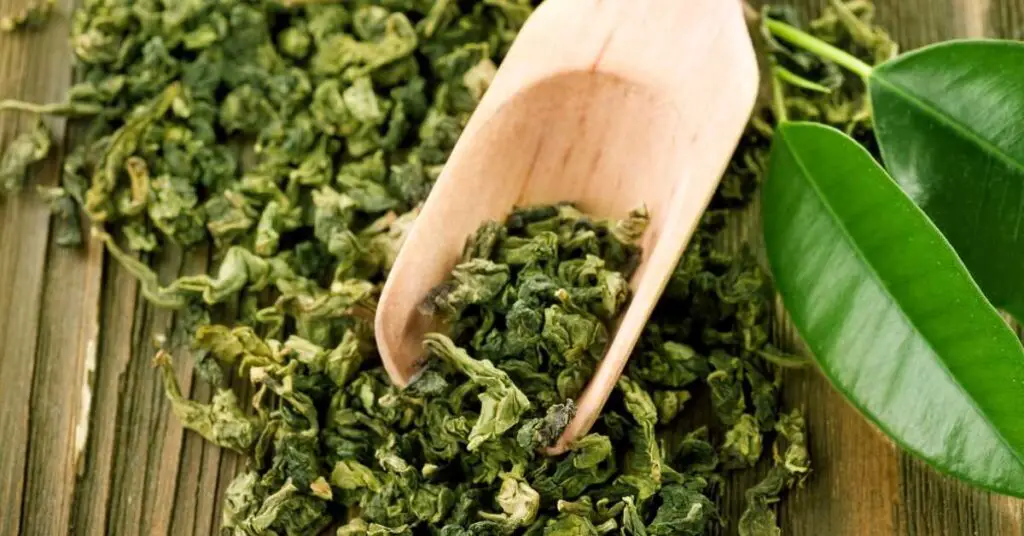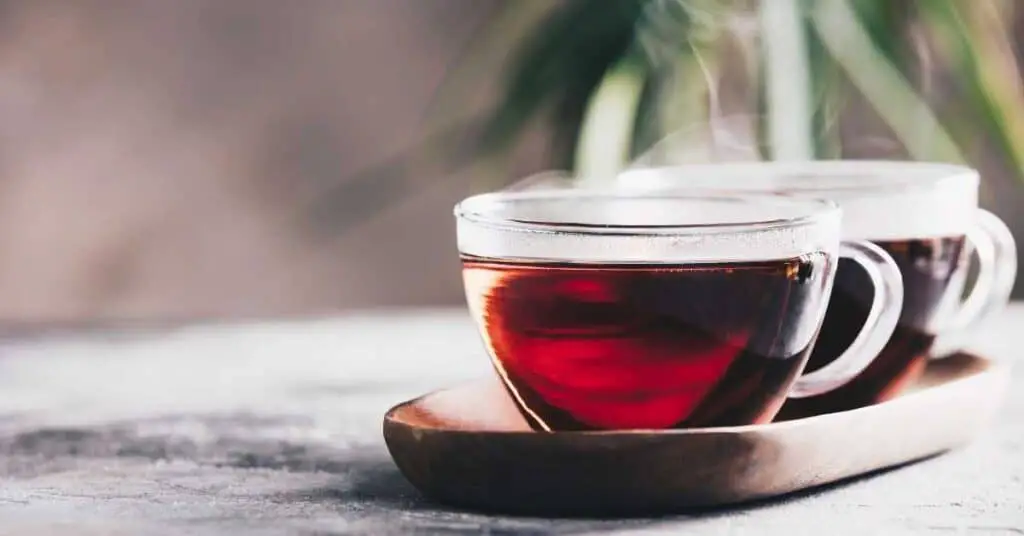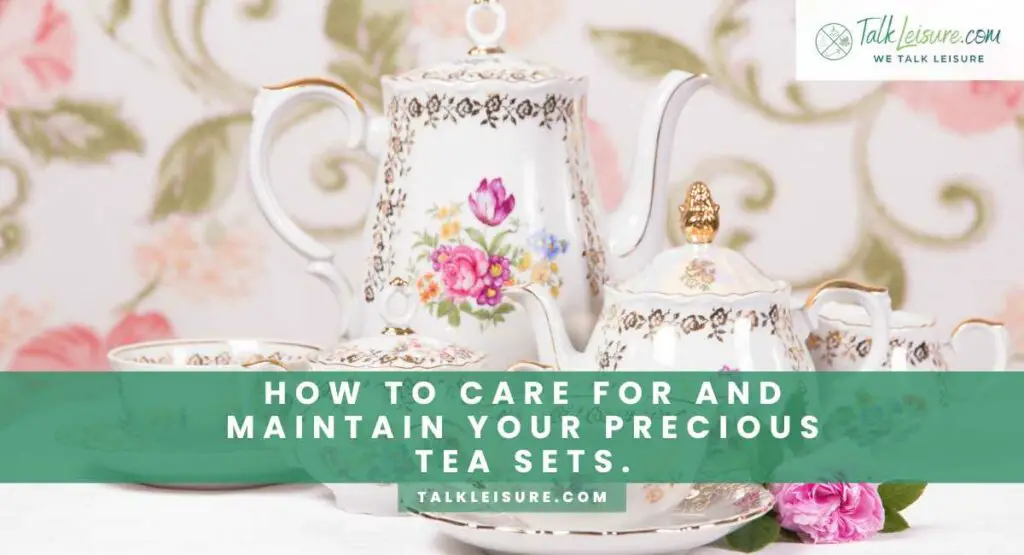In the world of tea, there exists a verdant jewel that transcends the ordinary—Matcha. Originating in ancient Japan, this powdered green elixir has captivated palates and cultures worldwide. Beyond its vibrant hue lies a rich tapestry of history, terroir, and tantalizing flavors.
From the revered fields of Uji to the versatile landscapes of Nishio, each region imparts its distinct signature to this revered beverage.
As we embark on this journey, we’ll explore the traditions, health benefits, and regional nuances that make matcha a treasure trove of taste and well-being. Join us in uncovering the secrets of matcha’s allure.
Also read: The secret world of tea sommeliers: How experts taste and rate tea.
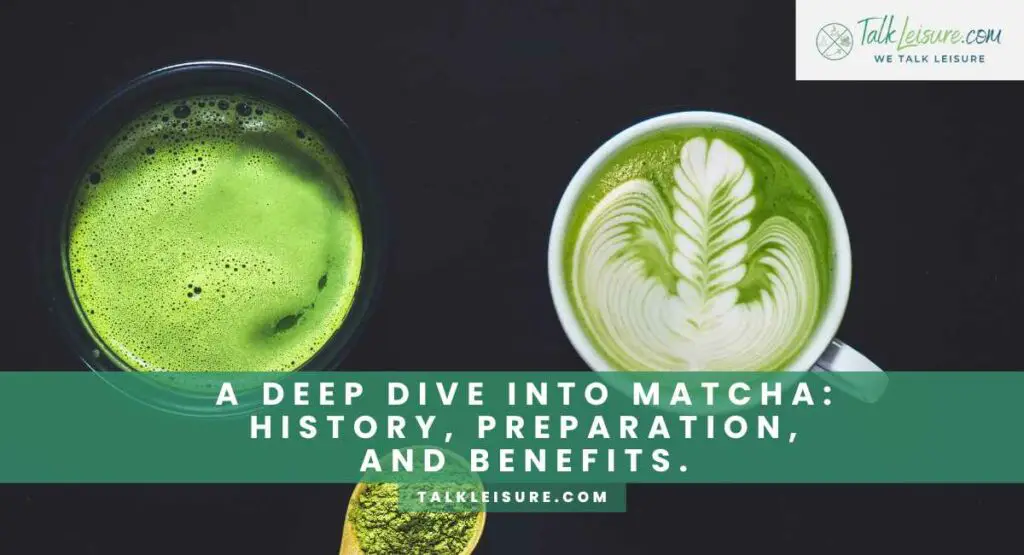
What is Matcha?
Alright, let’s get down to the nitty-gritty of what makes matcha, well, matcha!
Matcha is a vibrant green tea powder renowned for its vivid color and unique flavor. It’s made by finely grinding shade-grown green tea leaves. Unlike traditional infusions, matcha provides a concentrated, full-bodied taste and is celebrated for its health benefits and ceremonial significance in Japanese culture.
Picture this: lush, vibrant tea fields where green tea leaves bask in the sun. These leaves, however, are destined for something more than your average brew. They’re on a mission to become Matcha, the Rockstar of the tea world.
The Making of Matcha Magic
Here’s the secret sauce: shade and stone-ground finesse. About 20-30 days before harvest, tea plants are shaded from the sun. This forces them to work extra hard, producing leaves that are richer in chlorophyll, amino acids, and, most importantly, L-theanine, which gives matcha its distinct umami flavor.
Harvest time comes, and only the youngest, most tender leaves get plucked. These little warriors are then steamed to halt fermentation (keeping that vivid green color intact) and dried to become tencha. Think of tencha as the cool kid in school, the precursor to matcha.
The Tenacious Tencha Transformation
This is where it gets interesting. The dried tencha leaves are ground into a fine powder using traditional granite stone mills. It’s a bit like a slow-motion dance party where leaves twirl and whirl, becoming the velvety, verdant powder we know as matcha.
Now, this isn’t your everyday tea; it’s a concentration of pure green tea goodness. You’re consuming the entire leaf, not just an infusion, which is why matcha packs such a powerful punch.
The Grades of Green
Oh, and let’s talk about grades. Matcha isn’t a one-size-fits-all affair. There’s a whole spectrum, ranging from culinary grade (great for lattes and baking) to ceremonial grade (the crème de la crème, reserved for traditional tea ceremonies). Each grade has its own unique characteristics, so choosing the right one is like picking the perfect outfit for a special occasion.
Green Tea, Elevated
So, there you have it—Matcha demystified! It’s green tea on steroids, a powerhouse of flavor and nutrients, and it’s not afraid to show it.
Now that you’re armed with the knowledge of how matcha is born, let’s journey deeper into its fascinating history and discover the ancient roots that make it the revered elixir it is today.
Also read: How to host an unforgettable vintage tea party.
The Historical Journey of Matcha
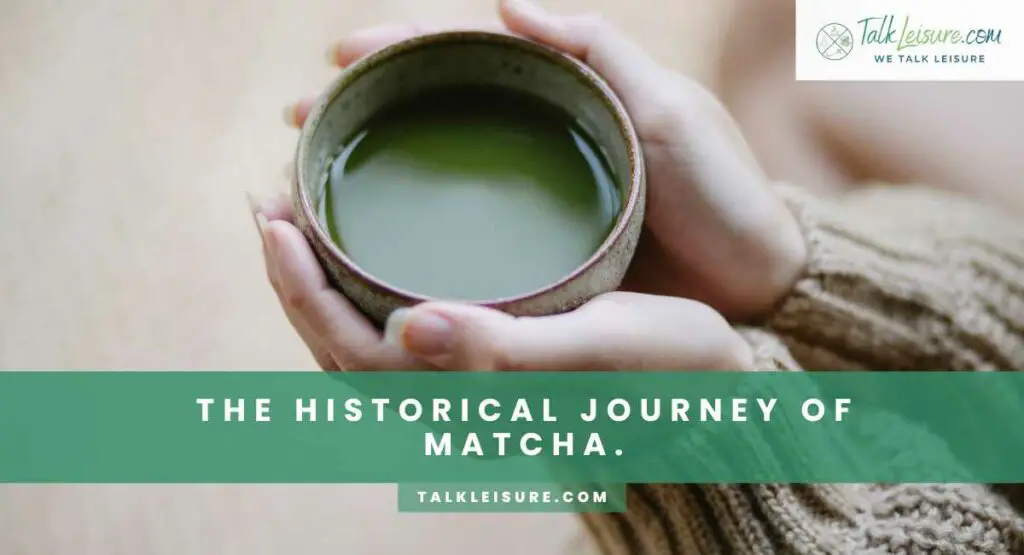
Hold on to your teacups, because we’re about to hop into a time machine and journey back through the centuries to uncover the fascinating history of matcha.
A Brew Fit for Emperors
Our story begins in ancient China, around the Tang Dynasty (618-907 CE). Back then, green tea was already a beloved beverage, enjoyed by emperors and scholars alike. But the method of processing and preparing tea was quite different from what we know today.
It wasn’t until the early days of the Song Dynasty (960-1279 CE) that the process of steaming tea leaves was perfected. This innovation led to the creation of “whisked tea” or what we now call matcha.
The Zen Connection
Fast forward to the 12th century, when a bunch of Zen Buddhist monks brought this powdered tea to Japan. They saw potential in matcha for enhancing meditation practices due to its calming effects and the sustained focus it provided. Thus, matcha became an integral part of Zen rituals.
Monks became the true matcha connoisseurs, perfecting the art of its preparation. They even developed special utensils like bamboo whisks (chasen) and ceramic bowls (chawan) to elevate the matcha experience.
Matcha Takes Center Stage
By the 14th century, matcha had become an essential part of Japanese culture. It wasn’t just a drink; it was a way of life. Samurai warriors embraced it for its energy-boosting properties before battle, and the Japanese tea ceremony (chanoyu) emerged, turning matcha into a full-fledged cultural event.
Shoguns and Emperors celebrated it, poets waxed lyrical about it, and artists painted its serene beauty. Matcha wasn’t just a beverage; it was a muse.
The Rise, Fall, and Revival
As centuries passed, matcha’s popularity ebbed and flowed. It hit a low point during the Meiji era (1868-1912) due to a combination of changing tastes and shifts in cultural focus. However, it made a triumphant comeback in the early 20th century, thanks to renewed interest in traditional Japanese practices.
Today, matcha is not just a drink but a global phenomenon. Its vibrant green hue and rich history continue to captivate tea enthusiasts and health-conscious individuals around the world.
So, the next time you whisk up a frothy bowl of matcha, remember you’re sipping on a beverage with roots that run deep, through dynasties and across continents.
In the next Section, we’ll venture into the very fields where matcha’s journey begins – the cultivation process. It’s a story of meticulous care and ancient techniques that give matcha its distinctive character. Stay tuned!
Cultivation of Matcha: Growth and Harvesting Process
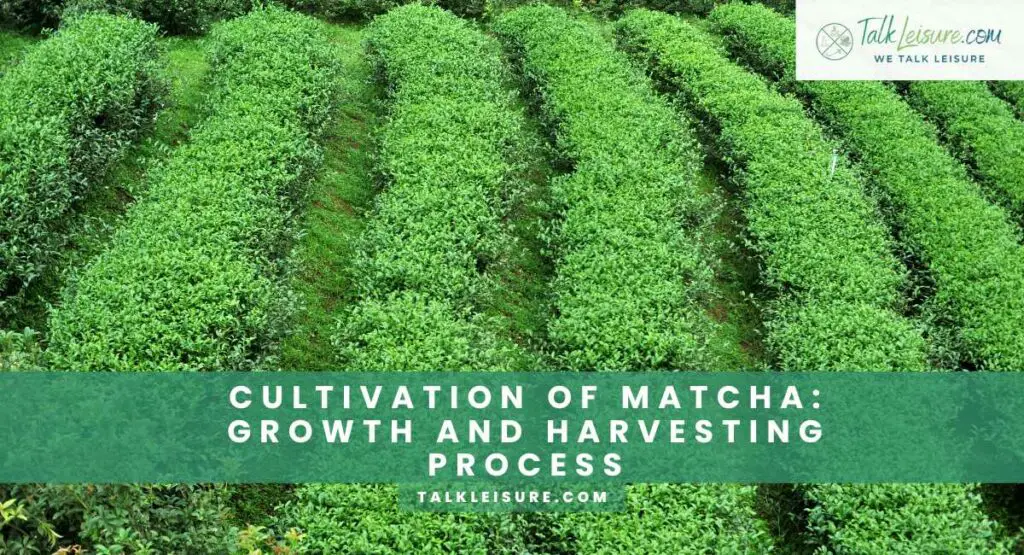
Alright, tea enthusiasts, let’s roll up our sleeves and step into the verdant world of matcha cultivation. This is where the magic begins, in the tea fields where patience, precision, and a touch of nature’s grace come together.
The Art of Shade
Remember, matcha isn’t your garden-variety green tea. It’s pampered from the start. About a month before harvest, the tea plants are shielded from the sun using traditional bamboo screens or specially designed frames. This shading process is crucial because it encourages the plants to produce more chlorophyll, which gives matcha its vibrant green hue and boosts its nutritional profile.
Tender Leaves, Precious Harvest
When the time is just right (usually late April to early May), the youngest, most tender leaves are handpicked. These are the ones that have been cradled in the shade, absorbing all that extra goodness. It’s a labor-intensive process, but it’s essential to ensure the highest quality matcha.
Steaming and Drying: The Gentle Touch
Once plucked, the leaves are whisked away to be steamed. This step is crucial in halting fermentation and preserving that beautiful green color. After their spa day in steam, they’re spread out to dry. The result? Tencha, the base from which matcha is born.
Granite Mills: The Final Grind
Now, here’s where the magic really happens. The dried tencha leaves are stone-ground into a fine, talc-like powder using traditional granite mills. It’s a painstaking process, but one that ensures the integrity and quality of the final product. Each mill only produces a small amount per hour, underlining the craftsmanship involved.
A Symphony of Senses
The cultivation process is a delicate dance between nature and human hands. It’s a symphony of careful nurturing, skilled harvesting, and precise processing that gives us that vibrant, velvety matcha powder we love.
So, next time you sip your matcha latte or whisk up a bowl of ceremonial-grade matcha, know that it’s the culmination of months of dedication, a touch of tradition, and a whole lot of nature’s green goodness.
In the next Section, we’ll delve into the world of matcha grades and types, where we’ll learn how to decipher the quality of this verdant elixir. Stay tuned, because the journey’s only getting more intriguing from here!
Categorizing Matcha: Various Grades and Types
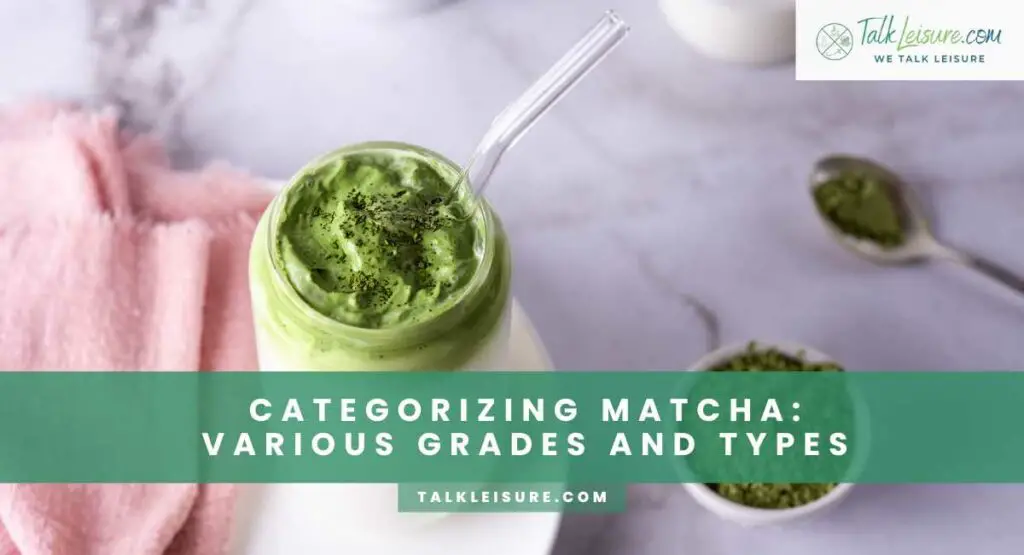
Alright, tea enthusiasts, it’s time to play matchmaker – not with people, but with tea leaves! Let’s explore the world of matcha grades and types, where quality meets preference in a delightful dance of flavors and aromas.
Culinary Grade: The Workhorse
First up, we have the culinary grade matcha. This is your kitchen companion, the versatile workhorse of the matcha family. It’s robust, slightly bitter, and perfect for blending into smoothies, baking, or whipping up a matcha latte. It’s like the ‘jack of all trades’ in the matcha world.
Premium Grade: A Step Up
Moving up the ladder, we have the premium grade matcha. This one’s got a smoother texture and a more balanced flavor profile. It’s ideal for those who enjoy their matcha in a more traditional form, whisked into a frothy, ceremonial-style beverage. It’s like the sophisticated older sibling, refined and graceful.
Ceremonial Grade: The Tea Ceremony Star
Ah, the crème de la crème – the ceremonial grade matcha. This is the aristocrat of matcha, the star of traditional Japanese tea ceremonies. It’s the smoothest, most vibrant, and subtly sweet matcha you can get your hands on. Sipped in its purest form with hot water, it’s a ritualistic experience, inviting you into a world of mindfulness and serene reflection.
Blends and Flavors: Adding a Twist
Now, let’s talk about flavored matcha blends. These are like matcha’s funky cousins – they come in all sorts of flavors, from fruity to floral. While they may not hold the same cultural significance as their traditional counterparts, they add a playful twist to the matcha experience.
Understanding the Labeling
When shopping for matcha, look for labels that specify the grade. Remember, you get what you pay for. Ceremonial grade is a premium product, while culinary grade serves different purposes.
So, whether you’re a matcha purist, a culinary creator, or someone who likes to experiment with flavors, there’s a matcha grade and type just for you.
In the next Section, we’re going to don our judge’s hats and dive into the intriguing world of matcha quality assessment. We’ll learn how to decipher the nuances that distinguish a top-notch matcha from its counterparts. Stay tuned, because it’s about to get deliciously discerning!
Deciphering Matcha Grades: Quality Assessment
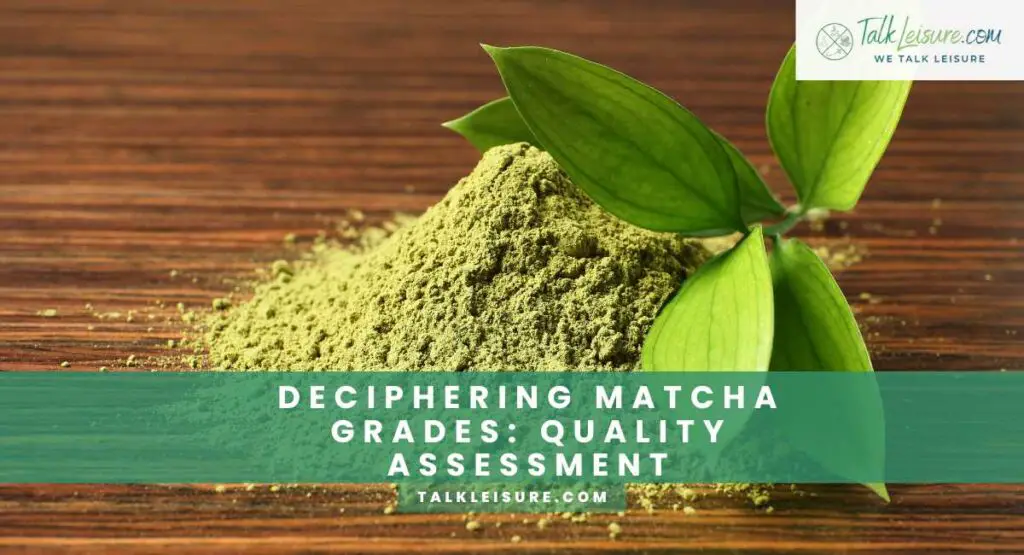
All right, tea aficionados, it’s time to put on our detective hats and uncover the secrets of distinguishing top-tier matcha from the rest. Quality assessment in the world of matcha is like conducting a symphony – it’s all about balance, harmony, and that perfect crescendo of flavors.
Color: The Green Gauge
The first clue in our matcha investigation is color. High-quality matcha boasts a vibrant, almost electric green hue. This vividness is a testament to the careful shading and expert processing the leaves undergo. So, if your matcha looks more like a dull olive than a brilliant emerald, it might be time to reconsider.
Texture: Silky Smooth or Gritty?
Next up, texture. Quality matcha is finely ground to a talc-like powder that feels incredibly smooth to the touch. If your matcha feels gritty or has coarse bits, it’s a sign that it might not be of the highest quality.
Aroma: The Nose Knows
Close your eyes and inhale deeply. Quality matcha should have a fresh, inviting aroma that’s reminiscent of freshly cut grass with a touch of earthiness. If it smells stale or lacks that characteristic matcha fragrance, it might be time to move on.
Flavor: From Umami to Bitter
Now, let’s talk about taste. The best matcha strikes a delicate balance between sweetness and umami, with a subtle touch of bitterness. It should never be overly bitter or astringent. Ceremonial-grade matcha, in particular, should have a silky, almost creamy texture on the palate.
Origin and Certification: Trusting the Source
Knowing where your matcha comes from is crucial. Look for matcha sourced from reputable regions like Uji, Nishio, or Kagoshima in Japan. Additionally, organic or ceremonial certifications can be indicators of quality and ethical sourcing.
Price: You Get What You Pay For
Lastly, let’s address the elephant in the room: price. Quality matcha is an investment. If a deal seems too good to be true, it probably is. Remember, you’re paying for the meticulous care, craftsmanship, and centuries of tradition that go into producing top-notch matcha.
Armed with these clues, you’re now equipped to discern the crème de la crème from the run-of-the-mill.
Preparing Matcha: Methods and Techniques
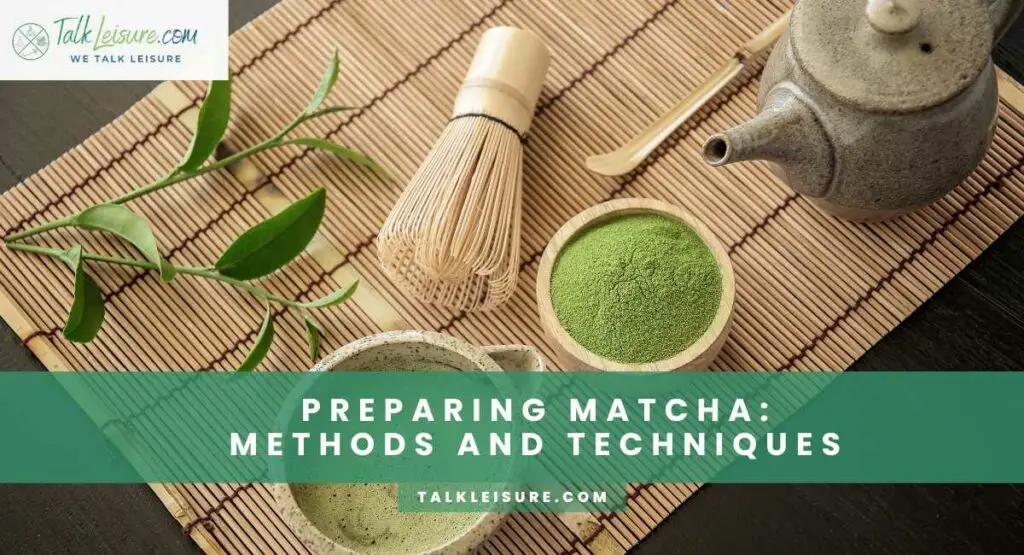
Absolutely, let’s dive into the art of preparing matcha. It’s not just about mixing tea; it’s a ritual, an experience, a moment of calm in our busy lives. Here’s how you can master the process:
Tools You’ll Need:
- Matcha Bowl (Chawan): This is traditionally a wide-brimmed ceramic bowl, perfect for whisking.
- Bamboo Whisk (Chasen): It’s specially designed to whisk matcha into a frothy consistency.
- Bamboo Scoop (Chashaku): This tool measures out the right amount of matcha.
- Matcha Sifter (Furui): It helps remove any clumps in the matcha powder.
Step by Step Guide:
- Preheat the Bowl: Pour a small amount of hot water into your matcha bowl to warm it. Swirl the water around and then discard it.
- Sift the Matcha: Using the bamboo scoop, measure out the desired amount of matcha powder (usually 1-2 scoops). Place it in the sifter and gently tap it to sift the matcha into the bowl. This prevents clumps.
- Add Water: Pour about 60-80 ml of hot water (not boiling, ideally around 70-85°C or 160-185°F) into the bowl with the sifted matcha.
- Whisk it Up: Take the bamboo whisk and whisk briskly in a “W” or “M” shape motion. Start slowly and then increase your speed. The aim is to create a frothy layer on top.
- Enjoy the Matcha: Once you’ve achieved a smooth, frothy consistency, you’re ready to enjoy your matcha!
Remember, practice makes perfect. It might take a few tries to get your matcha just the way you like it. And don’t be afraid to adjust the amount of matcha or water to suit your taste preferences.
Feel free to experiment! You can adjust the water temperature, whisking technique, or even try different types of matcha to find what suits you best. Enjoy your matcha, and savor the moment!
Why is Matcha So Popular and Expensive?
All right, curious minds, let’s address the big green elephant in the room – why does matcha often come with a hefty price tag? Spoiler alert: it’s not just about hype, but a fascinating interplay of nature, tradition, and craftsmanship.
Shade-Grown Elegance
One of the key factors contributing to matcha’s price is the labor-intensive process of shading the tea plants. This deliberate step forces the plants to work harder, producing leaves with higher levels of chlorophyll, amino acids, and L-theanine. This results in matcha’s vibrant color and distinctive flavor profile, but it also means more effort and resources are invested in its production.
Hand-Picked Perfection
Remember those tender leaves we talked about in Section 4? Well, they’re handpicked, one by one, by skilled harvesters. This meticulous process ensures that only the finest, youngest leaves make the cut. It’s a labor of love that requires time, expertise, and a whole lot of patience.
Traditional Stone Milling
The final step in matcha production involves grinding the dried tencha leaves into that fine, silky powder. This process is carried out using traditional granite stone mills, which are slow, precise, and require careful maintenance. Each mill produces a limited amount of matcha per hour, emphasizing the artistry and craftsmanship involved.
Quality Assurance
Producing top-grade matcha is a meticulous endeavor, and quality control is paramount. Matcha is subject to rigorous testing and evaluation to ensure it meets the high standards expected from this revered beverage. This extra layer of scrutiny ensures that only the finest matcha reaches your cup.
Cultural Significance
Lastly, matcha isn’t just a beverage; it’s a centuries-old tradition deeply ingrained in Japanese culture. The expertise passed down through generations and the respect for these ancient practices contribute to matcha’s enduring allure.
So, when you invest in a tin of high-quality matcha, you’re not just buying a product; you’re supporting a legacy of craftsmanship, tradition, and respect for nature. It’s a small price to pay for a sip of history and a taste of the sublime.
Unlocking Matcha’s Advantages: Its Health Benefits
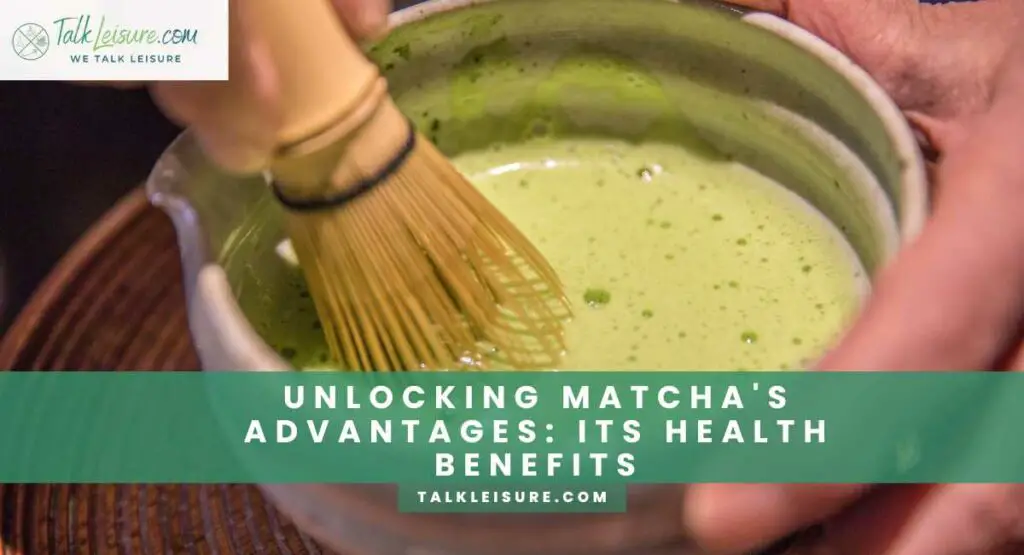
All right, health-conscious readers, get ready to be amazed. Matcha isn’t just a tasty beverage; it’s a powerhouse of nutrients that can give your well-being a serious boost. So, let’s dive into the incredible health benefits that come with each sip of this vibrant green elixir.
- Rich in Antioxidants: Matcha is loaded with antioxidants, particularly catechins, which help combat oxidative stress and protect your cells from damage. It’s like a shield for your body against free radicals.
- Enhanced Calm and Focus: Thanks to its unique combination of amino acids, particularly L-theanine, matcha offers a state of alert calmness. It promotes relaxation without drowsiness, making it an ideal aid for meditation and concentration.
- Metabolism Booster: The catechins in matcha have been shown to increase metabolic rate and aid in fat oxidation. This can be a helpful addition to a balanced diet and exercise routine.
- Detoxification Support: Chlorophyll, the green pigment found in matcha, is a natural detoxifier. It helps cleanse the body of harmful toxins and heavy metals, promoting overall wellness.
- Immune System Boost: Matcha contains high levels of vitamins, minerals, and other beneficial compounds that strengthen the immune system, helping you stay healthy and vibrant.
- Improved Skin Health: The antioxidants in matcha can help fight inflammation and reduce signs of aging. It’s like a spa day for your skin, from the inside out.
- Stress Reduction: The L-theanine in matcha has calming effects, which can help reduce stress and anxiety levels. It’s like a mini-vacation for your mind.
- Regulated Blood Sugar Levels: Some studies suggest that matcha may help regulate blood sugar levels, making it a potential ally for those managing diabetes.
- Heart Health Support: Regular consumption of matcha has been associated with lower levels of LDL cholesterol, reducing the risk of heart disease.
- Enhanced Cognitive Function: Matcha’s combination of caffeine and L-theanine can lead to improved cognitive performance, including memory, attention, and reaction time.
Remember, while matcha can be a wonderful addition to a healthy lifestyle, it’s not a magic cure-all. It’s best enjoyed as part of a balanced diet and regular exercise routine.
In the next Section, we’ll debunk some common myths and misconceptions about matcha, separating fact from fiction. Get ready for a little myth-busting session! Stay tuned!
Myths and Misconceptions about Matcha
Alright, dear readers, it’s time to set the record straight. There are a few myths and misconceptions floating around about matcha, and its high time we cleared the air. Let’s separate fact from fiction.
Myth 1: Matcha is Just Green Tea
While matcha and green tea share a common ancestor, they’re not the same. Matcha is a powdered form of shade-grown green tea leaves, giving it a distinct flavor, texture, and nutritional profile. It’s a concentrated powerhouse compared to the traditional steeped green tea.
Myth 2: All Matcha is Created Equal
Not quite. Matcha comes in various grades, ranging from culinary to ceremonial. Each grade has different characteristics and uses. Culinary matcha is suitable for cooking and blending, while ceremonial matcha is reserved for traditional tea ceremonies. Quality matters!
Myth 3: Matcha is Overloaded with Caffeine
While matcha does contain caffeine, it’s not the same caffeine jolt you get from a cup of coffee. It’s balanced by L-theanine, an amino acid that provides a calm focus. This combo provides a sustained, alert energy without the jitters or crash.
Myth 4: Matcha is Only for Drinking
Not true! Matcha’s versatility knows no bounds. It can be used in cooking, baking, and even incorporated into skincare routines. From matcha lattes to matcha-infused desserts, the possibilities are endless.
Myth 5: Any Green Powder is Matcha
Beware of imposters! True matcha comes from Japan and is made from shade-grown tea leaves. Be cautious of products claiming to be “matcha” if they don’t specify their origin or if the color and texture seem off.
Myth 6: You Need Special Tools to Enjoy Matcha
While traditional tools like bamboo whisks and ceramic bowls enhance the experience, you don’t need them to enjoy matcha. A simple bowl, spoon, and a bit of determination will suffice. It’s about savoring the taste, not the fancy equipment.
Myth 7: Matcha Tastes Bitter
When prepared correctly, matcha shouldn’t be overly bitter. In fact, high-quality matcha has a smooth, balanced flavor with a pleasant touch of natural sweetness. If your matcha tastes overly bitter, it may be a sign of poor quality or improper preparation.
There you have it, folks! These are just a few of the myths and misconceptions about matcha that needed debunking. Armed with the right knowledge, you can now enjoy your matcha with confidence and clarity.
Matcha and Mindfulness: Mental and Emotional Well-being
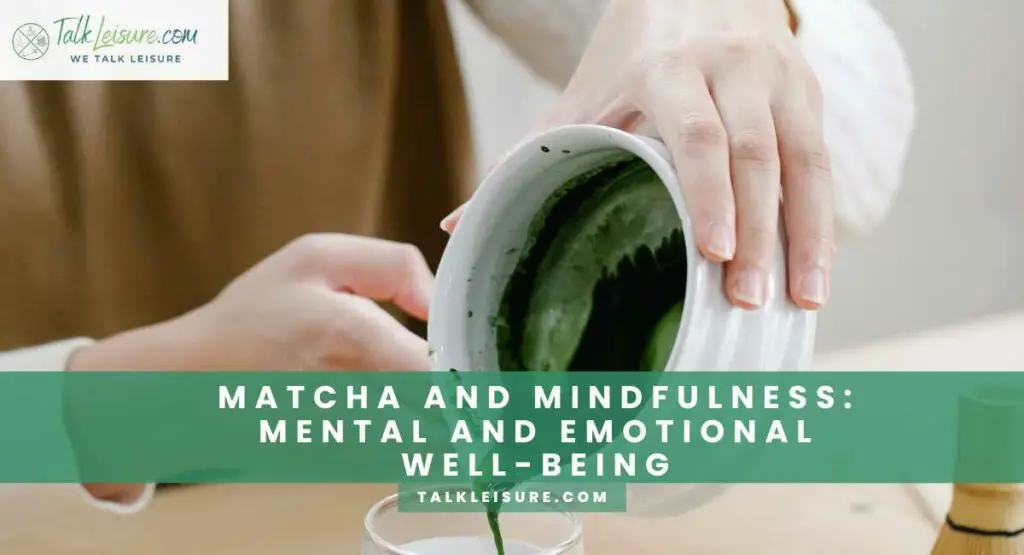
Alright, dear readers, let’s delve into a side of matcha that goes beyond the physical benefits. Matcha has a special knack for nurturing mental and emotional well-being, acting as a gentle guide to mindfulness in our busy lives.
The Zen of Matcha
In the heart of matcha’s history lies a profound connection with Zen Buddhism. The preparation and consumption of matcha became a meditative ritual for monks seeking tranquility and clarity. Today, we can adopt this practice to cultivate mindfulness in our own lives.
L-Theanine: Nature’s Chill Pill
Meet L-theanine, matcha’s secret weapon. This amino acid induces a state of calm alertness, promoting relaxation without drowsiness. It’s like a gentle hug for your brain, providing focus and mental clarity.
Stress Reduction, One Sip at a Time
In a world that often feels like a whirlwind, matcha offers a moment of stillness. The act of preparing and sipping matcha can be a mindful ritual, a pause button in the chaos. It encourages us to be present, to savor each sip, and to appreciate the simple joys in life.
A Journey Within
With matcha in hand, take a moment to be fully present. Feel the warmth of the bowl, the silky texture of the tea, and the soothing aroma. Allow your senses to be fully engaged, grounding you in the present moment.
Creativity Unleashed
Matcha’s unique combination of caffeine and L-theanine provides a focused, calm energy. This mental state can be a breeding ground for creativity and inspiration. So, whether you’re an artist, writer, or simply looking to brainstorm, matcha might just be your new muse.
Mindful Sipping, Mindful Living
By incorporating matcha into your daily routine, you’re inviting a moment of mindfulness into your life. It’s a reminder to slow down, to savor, and to appreciate the little things that often go unnoticed.
Exploring Regional Variations in Matcha Production
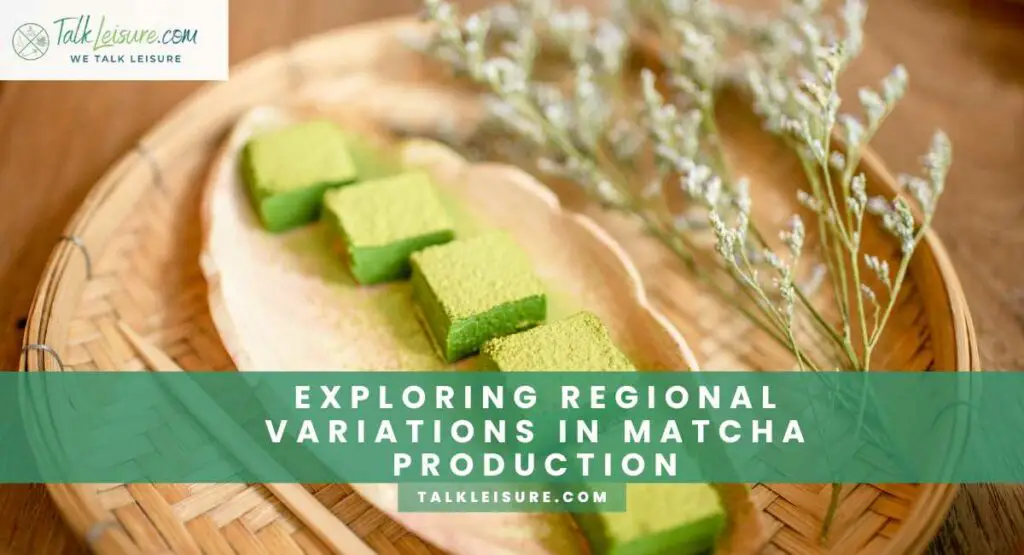
All right, matcha connoisseurs, let’s embark on a fascinating journey through the various regions that give birth to the exquisite flavors of this vibrant green elixir. Just like grapes in wine-making, the terroir of matcha plays a pivotal role in shaping its unique taste profile. Here, we’ll dive into the distinct characteristics of matcha from Uji, Nishio, and several other noteworthy regions.
Uji, Kyoto Prefecture: The Birthplace of Matcha Excellence
Our first stop is the illustrious Uji in the Kyoto Prefecture. Renowned as the birthplace of matcha, Uji boasts a legacy that dates back over a millennium. The combination of misty climate, fertile soil, and the age-old expertise of Uji’s farmers produces matcha with a profound depth of flavor. The resulting matcha is characterized by a robust umami note, velvety texture, and a remarkable balance of sweet and bitter.
Nishio, Aichi Prefecture: The Versatile Virtuoso
Next on our journey is Nishio, located in the Aichi Prefecture. Nishio is a true powerhouse in matcha production, offering a wide range of grades. Its temperate climate and fertile soil contribute to a well-rounded flavor profile, known for its harmonious blend of sweetness and bitterness. Nishio matcha is celebrated for its versatility, making it a favored choice for both culinary and ceremonial applications.
Kagoshima, Kagoshima Prefecture: The Dynamic Newcomer
Down south in Kyushu, we find Kagoshima Prefecture, an emerging player in the matcha realm. Characterized by volcanic soil and abundant sunshine, Kagoshima produces matcha with a distinct character. It offers a slightly different flavor profile compared to its Uji and Nishio counterparts, reflecting the region’s unique terroir.
Shizuoka, Shizuoka Prefecture: The Green Tea Hub
While Shizuoka Prefecture is better known for sencha production, it also plays a significant role in matcha cultivation. The rich, fertile lands of Shizuoka yield matcha with a flavor profile influenced by the region’s specific climate and soil. Shizuoka matcha tends to be milder in flavor compared to Uji or Nishio matcha, providing a different yet delightful tasting experience.
China and Korea: The Global Players
Beyond Japan, China and Korea have also embraced matcha production. Each region brings its own unique touch to this cherished beverage, influenced by their respective traditions and growing conditions. These global variations offer a diverse array of flavor profiles for matcha enthusiasts to explore.
So there you have it, a whirlwind tour of matcha’s diverse terroirs. Understanding the origins of matcha provides insight into the wide range of flavors you can discover.
conclusion
In the verdant world of matcha, we’ve embarked on a journey steeped in tradition, terroir, and tantalizing flavors. From Uji’s ancient legacy to Nishio’s versatile offerings and Kagoshima’s emerging brilliance, each region adds its unique note to this vibrant green elixir.
Shizuoka, a green tea hub, complements the symphony with its mild, distinctive matcha. Beyond borders, China and Korea bring their own global flair. Remember, matcha is more than a beverage; it’s a portal to mindfulness and a treasure trove of health benefits. So, as you savor each velvety sip, know that you’re partaking in a legacy century in the making. Cheers to the matcha journey!
Frequently Asked Questions
- What are the benefits of Matcha while studying?
Matcha provides a focused, alert state without jitters. Its combination of caffeine and L-theanine enhances memory, cognitive function, and productivity. The antioxidants protect brain cells, and its calming properties reduce stress and anxiety, making it an ideal study aid for improved concentration and mood. Remember, moderation is key for optimal benefits.
- Can Matcha whiten skin?
Yes, Matcha can contribute to brighter, more radiant skin. It’s rich in antioxidants, particularly catechins, which help protect the skin from damage caused by free radicals. Additionally, Matcha’s chlorophyll content can aid in detoxification, leading to a clearer complexion. While it can improve skin health, it’s important to complement it with a balanced skincare routine for optimal results.
- Can I drink Matcha on an empty stomach?
It’s generally advisable not to drink Matcha on an entirely empty stomach, especially first thing in the morning. This is because Matcha contains caffeine, which can be harsh on an empty stomach and may lead to discomfort or irritability for some individuals. It’s best to have a light meal or snack before enjoying Matcha to help balance its effects and ensure a more pleasant experience.

